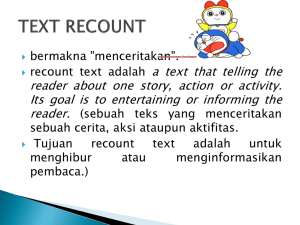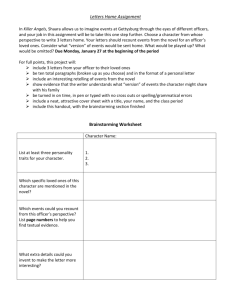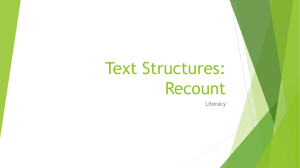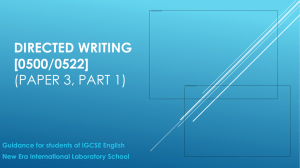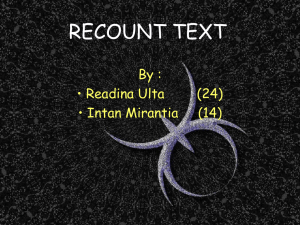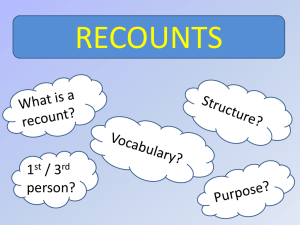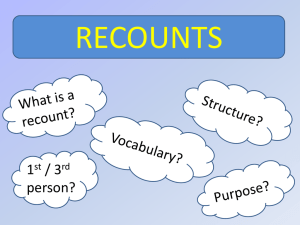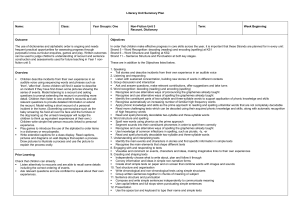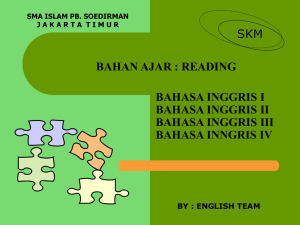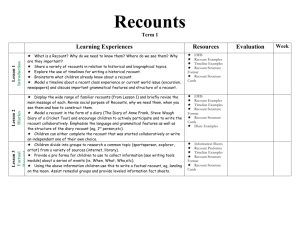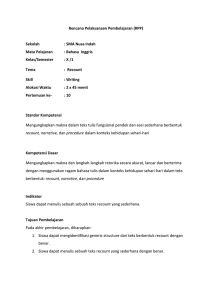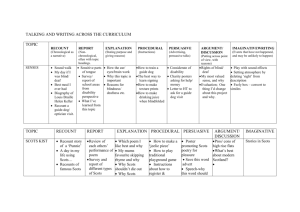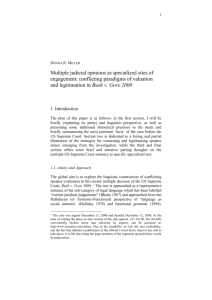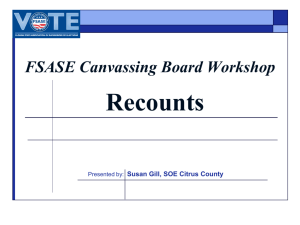Year 1 Non-fiction - Unit 3 - Suggested teaching approaches
advertisement
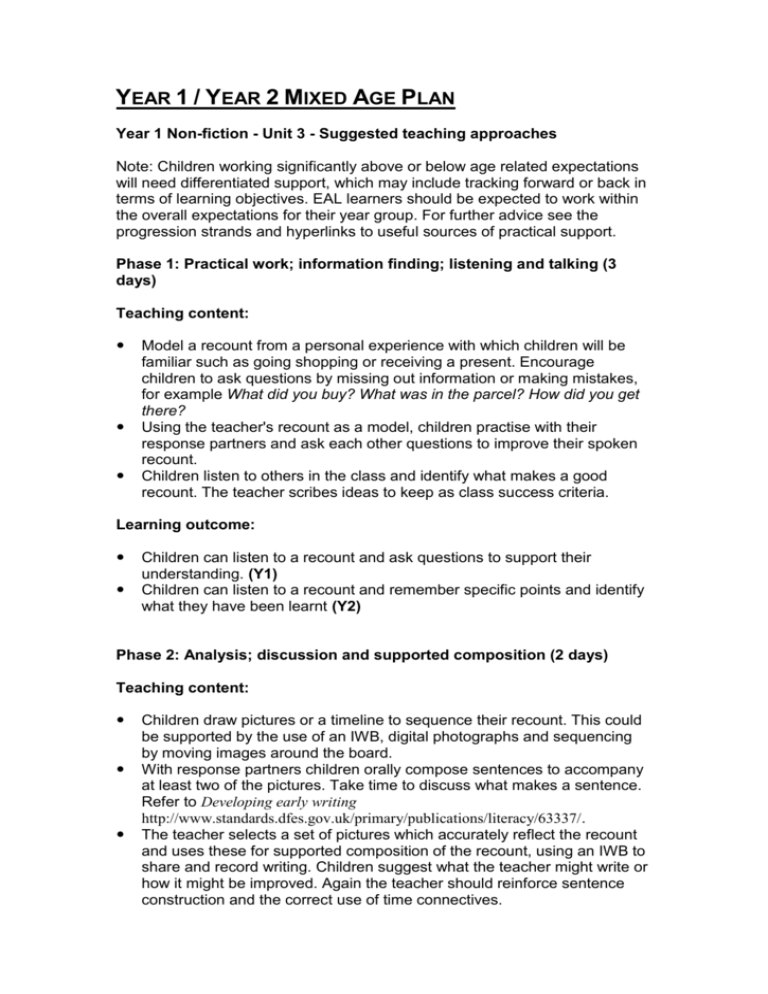
YEAR 1 / YEAR 2 MIXED AGE PLAN Year 1 Non-fiction - Unit 3 - Suggested teaching approaches Note: Children working significantly above or below age related expectations will need differentiated support, which may include tracking forward or back in terms of learning objectives. EAL learners should be expected to work within the overall expectations for their year group. For further advice see the progression strands and hyperlinks to useful sources of practical support. Phase 1: Practical work; information finding; listening and talking (3 days) Teaching content: Model a recount from a personal experience with which children will be familiar such as going shopping or receiving a present. Encourage children to ask questions by missing out information or making mistakes, for example What did you buy? What was in the parcel? How did you get there? Using the teacher's recount as a model, children practise with their response partners and ask each other questions to improve their spoken recount. Children listen to others in the class and identify what makes a good recount. The teacher scribes ideas to keep as class success criteria. Learning outcome: Children can listen to a recount and ask questions to support their understanding. (Y1) Children can listen to a recount and remember specific points and identify what they have been learnt (Y2) Phase 2: Analysis; discussion and supported composition (2 days) Teaching content: Children draw pictures or a timeline to sequence their recount. This could be supported by the use of an IWB, digital photographs and sequencing by moving images around the board. With response partners children orally compose sentences to accompany at least two of the pictures. Take time to discuss what makes a sentence. Refer to Developing early writing http://www.standards.dfes.gov.uk/primary/publications/literacy/63337/. The teacher selects a set of pictures which accurately reflect the recount and uses these for supported composition of the recount, using an IWB to share and record writing. Children suggest what the teacher might write or how it might be improved. Again the teacher should reinforce sentence construction and the correct use of time connectives. Learning outcomes: Children can order events correctly. (Y1) Children can identify and explain the main features of a sentence. (Y1) Children can tell and recount from their own experiences in an audible voice (Y2) Phase 3: Reading analysis; shared and independent writing (5 days) This part of the teaching sequence is based on Developing early writing, Year 1 unit 9: The day the fire engine came to school http://www.standards.dfes.gov.uk/primary/publications/literacy/63337/. Teaching content: Demonstrate the use of a simple dictionary to locate words connected to a school event such as big and engine. Use dictionaries throughout this phase and play games and sing songs to support alphabetical order. Using as a starting point the class recount produced as supported composition, identify and record the main features of a recount and useful words such as next, then and after. Talk about the event in school, recalling what happened, generating questions and useful vocabulary. Use photographs or digital images on an IWB to support and order shared writing, teacher scribing and supported composition as in the example from Developing early writing. Children will judge the effectiveness of each other's recounts against the success criteria they generated when reading recounts. The photographs, digital images and recounts are put together to form a class book or interactive ICT display. Learning outcomes: Children can use knowledge of the alphabet to locate words in simple dictionaries. (Y1) Children can write at least three simple sentences in the past tense and use some time connectives in a recount. (Y1) Children can understand the definition of a word in a dictionary (Y2) Children can write simple and compound sentences and use time/sequence words (Y2)
